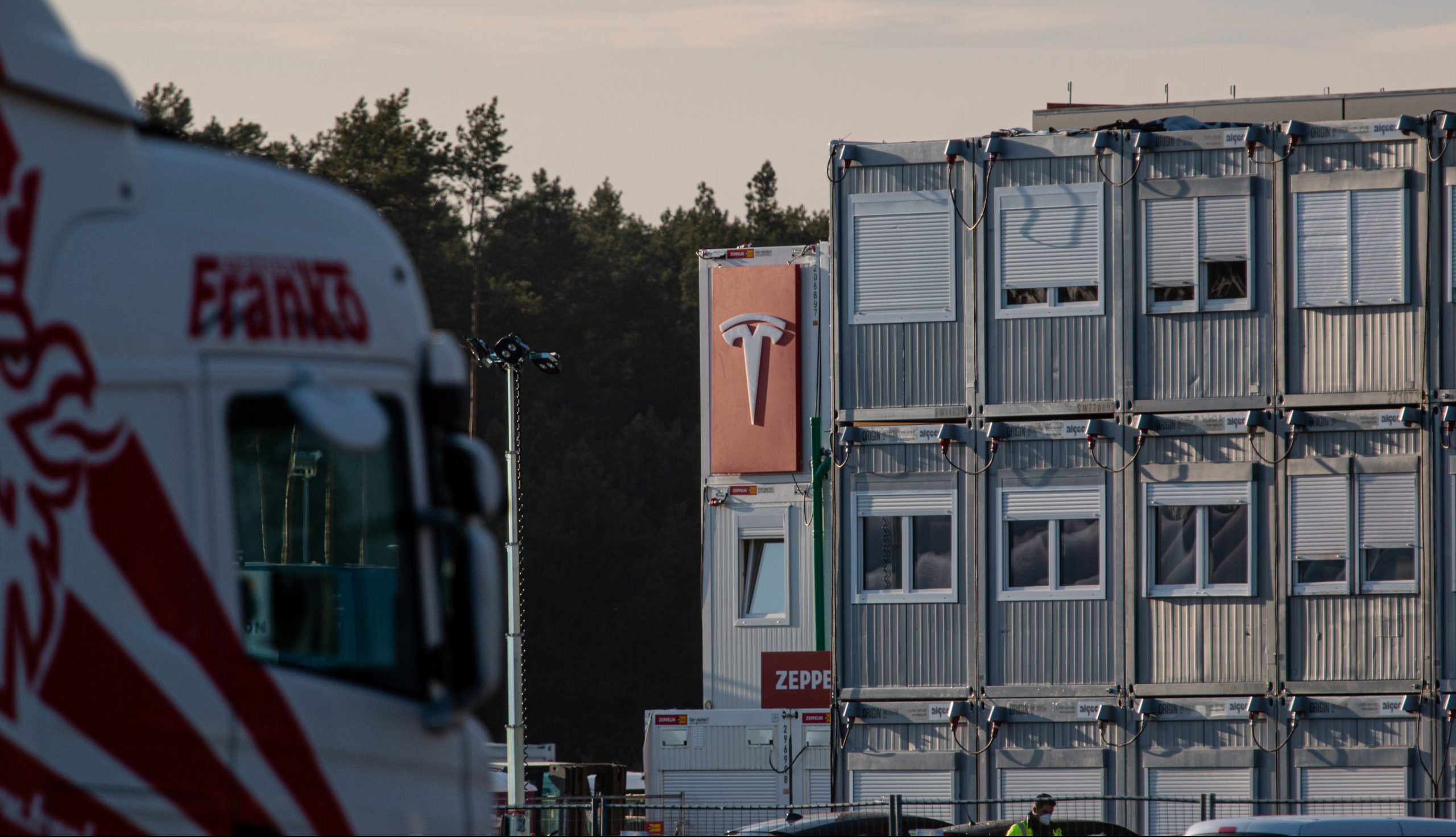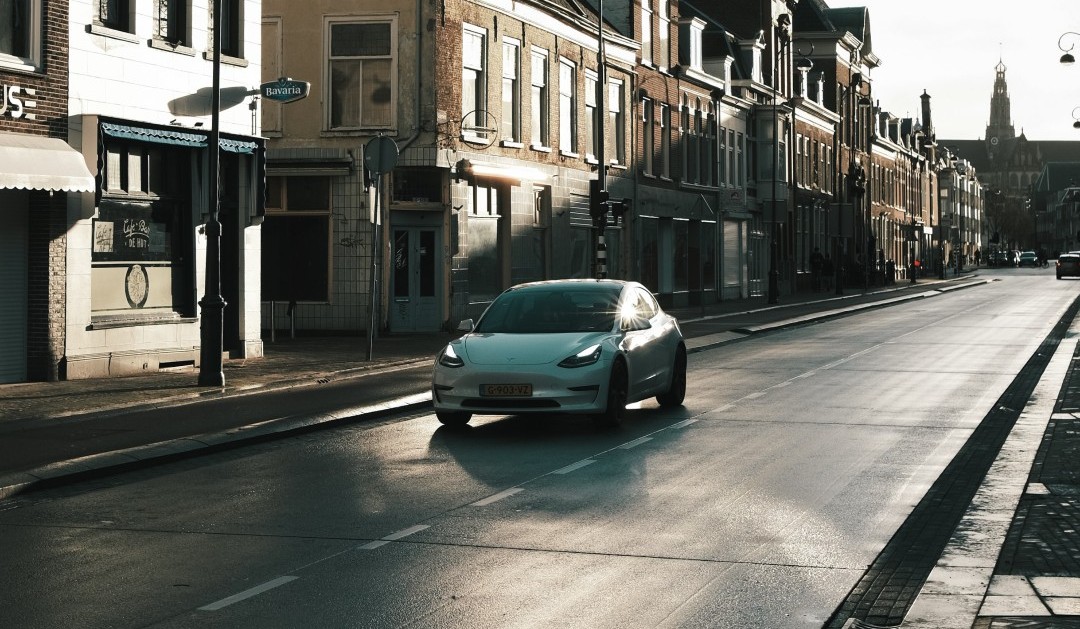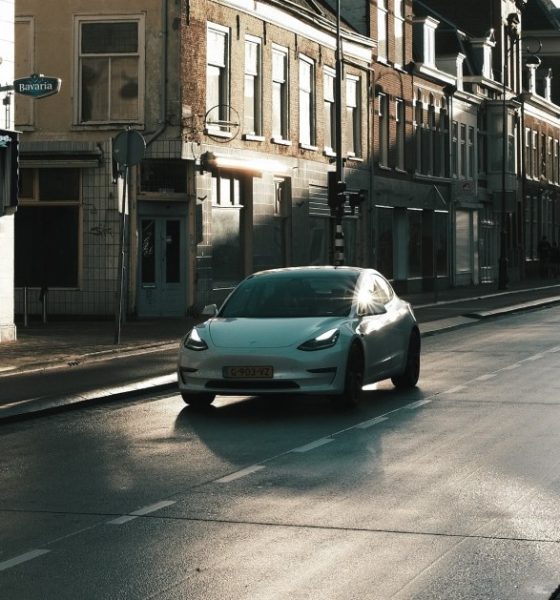Tesla has the makings of a controversial stock. It’s a company with products that are loved by its users and hated by its skeptics, and it’s led by a man that’s both admired by his supporters and loathed by his critics. It was then no surprise when Tesla became one of the most-shorted companies in the market. But amidst Tesla’s rise last year and the release of its Q1 2021 vehicle production and delivery report, it appears that TSLA bears, or at least a good number of them, are starting to go extinct.
A good overview of how a company is perceived could be found in the overall stance of analysts covering the stock. Among the 41 analysts covering TSLA today, 15 have a “Buy” rating, 14 maintain a “Hold” rating, and 12 have a “Sell” rating, as per data from Bloomberg. This suggests that Tesla remains quite polarizing, as Buy ratings typically outnumber Sell ratings 10-to-1 for stocks in the Dow Jones Industrial Average.
Tesla (TSLA) sets new records with with 184k vehicle deliveries in Q1 2021
The same is true for TSLA’s price targets. Tesla’s bull-bear spread between its highest price target ($1,036) and its lowest ($135) stands at $901, or about 133% of the current $661.75 stock price. In the Dow Jones Industrial Average, the average bull-bear spread for stocks is less than 50%. While Tesla has maintained its polarizing nature in the market, however, there is one metric that suggests that a TSLA bear exodus is taking place.
There was a time not too long ago when Tesla’s short-interest ratio was about 25%, which meant that one in every four shares was borrowed and sold by investors betting on the company to fail. Such a short-interest ratio was insane, as the average for stocks in the S&P 500 is just about 3%. Today, this ratio stands at just about 6%, which is still higher than average but significantly lower than its figures three years ago.
As noted in a Barron’s report, there is an important mitigating factor in Tesla’s short-interest ratio, in the form of hundreds of millions in convertible bonds outstanding, most of which were issued long ago and are capable of being converted into TSLA stock at around $65 per share. Considering that Tesla stock is worth more than 10x that amount today, the convertible bonds have rallied over 500% over the past year.

While this is great for convertible bond holders, numerous bond investors are actually not interested in Tesla stock. Instead, some are convertible arbitrage investors, who buy convertible bonds and short the underlying stock. This way, the arbitrage trader is able to lock in a notable bond yield. S3 Partners managing director of predictive analytics Ihor Dusaniwsky has noted that the bonds are “mostly held by hedge funds.” He also estimates that about half of Tesla’s current short interest might be part of a convertible arbitrage strategy.
If the S3 Partners’ executive’s estimates are accurate, it would suggest that about 22 million Tesla shares are sold short, or about 2.9% of TSLA stock. This number is substantial, but it is small compared to the 200 million TSLA shares sold short back in 2019. This does not mean to say that Tesla bears have entirely given up, of course, as some will likely remain with their short position for a long time to come. However, the declining number of TSLA shares that are sold short does suggest that bears, or at least a good number of them, may be throwing in the towel.
Former Goldman Sachs Asset Management CIO Gary Black has noted that the declining number of TSLA bears may be due to the fact that some critical bearish arguments against Tesla are being soundly debunked. One of these is the notion that Tesla’s share of the EV market will get drastically smaller as soon as other automakers enter the electric car segment. Despite the noise by proponents of this thesis, the opposite has been true, as more and more car buyers tend to leave gas-powered vehicles–not other electric cars like Tesla–when they purchase EVs made by other automakers.
Disclaimer: I am long TSLA
Don’t hesitate to contact us for news tips. Just send a message to tips@teslarati.com to give us a heads up.

News
Tesla starts showing how FSD will change lives in Europe
Local officials tested the system on narrow country roads and were impressed by FSD’s smooth, human-like driving, with some calling the service a game-changer for everyday life in areas that are far from urban centers.

Tesla has launched Europe’s first public shuttle service using Full Self-Driving (Supervised) in the rural Eifelkreis Bitburg-Prüm region of Germany, demonstrating how the technology can restore independence and mobility for people who struggle with limited transport options.
Local officials tested the system on narrow country roads and were impressed by FSD’s smooth, human-like driving, with some calling the service a game-changer for everyday life in areas that are far from urban centers.
Officials see real impact on rural residents
Arzfeld Mayor Johannes Kuhl and District Administrator Andreas Kruppert personally tested the Tesla shuttle service. This allowed them to see just how well FSD navigated winding lanes and rural roads confidently. Kruppert said, “Autonomous driving sounds like science fiction to many, but we simply see here that it works totally well in rural regions too.” Kuhl, for his part, also noted that FSD “feels like a very experienced driver.”
The pilot complements the area’s “Citizen Bus” program, which provides on-demand rides for elderly residents who can no longer drive themselves. Tesla Europe shared a video of a demonstration of the service, highlighting how FSD gives people their freedom back, even in places where public transport is not as prevalent.
What the Ministry for Economic Affairs and Transport says
Rhineland-Palatinate’s Minister Daniela Schmitt supported the project, praising the collaboration that made this “first of its kind in Europe” possible. As per the ministry, the rural rollout for the service shows FSD’s potential beyond major cities, and it delivers tangible benefits like grocery runs, doctor visits, and social connections for isolated residents.
“Reliable and flexible mobility is especially vital in rural areas. With the launch of a shuttle service using self-driving vehicles (FSD supervised) by Tesla in the Eifelkreis Bitburg-Prüm, an innovative pilot project is now getting underway that complements local community bus services. It is the first project of its kind in Europe.
“The result is a real gain for rural mobility: greater accessibility, more flexibility and tangible benefits for everyday life. A strong signal for innovation, cooperation and future-oriented mobility beyond urban centers,” the ministry wrote in a LinkedIn post.
News
Tesla China quietly posts Robotaxi-related job listing
Tesla China is currently seeking a Low Voltage Electrical Engineer to work on circuit board design for the company’s autonomous vehicles.

Tesla has posted a new job listing in Shanghai explicitly tied to its Robotaxi program, fueling speculation that the company is preparing to launch its dedicated autonomous ride-hailing service in China.
As noted in the listing, Tesla China is currently seeking a Low Voltage Electrical Engineer to work on circuit board design for the company’s autonomous vehicles.
Robotaxi-specific role
The listing, which was shared on social media platform X by industry watcher @tslaming, suggested that Tesla China is looking to fill the role urgently. The job listing itself specifically mentions that the person hired for the role will be working on the Low Voltage Hardware team, which would design the circuit boards that would serve as the nervous system of the Robotaxi.
Key tasks for the role, as indicated in the job listing, include collaboration with PCB layout, firmware, mechanical, program management, and validation teams, among other responsibilities. The role is based in Shanghai.
China Robotaxi launch
China represents a massive potential market for robotaxis, with its dense urban centers and supportive policies in select cities. Tesla has limited permission to roll out FSD in the country, though despite this, its vehicles have been hailed as among the best in the market when it comes to autonomous features. So far, at least, it appears that China supports Tesla’s FSD and Robotaxi rollout.
This was hinted at in November, when Tesla brought the Cybercab to the 8th China International Import Expo (CIIE) in Shanghai, marking the first time that the autonomous two-seater was brought to the Asia-Pacific region. The vehicle, despite not having a release date in China, received a significant amount of interest among the event’s attendees.
Elon Musk
Elon Musk and Tesla AI Director share insights after empty driver seat Robotaxi rides
The executives’ unoccupied tests hint at the rapid progress of Tesla’s unsupervised Robotaxi efforts.

Tesla CEO Elon Musk and AI Director Ashok Elluswamy celebrated Christmas Eve by sharing personal experiences with Robotaxi vehicles that had no safety monitor or occupant in the driver’s seat. Musk described the system’s “perfect driving” around Austin, while Elluswamy posted video from the back seat, calling it “an amazing experience.”
The executives’ unoccupied tests hint at the rapid progress of Tesla’s unsupervised Robotaxi efforts.
Elon and Ashok’s firsthand Robotaxi insights
Prior to Musk and the Tesla AI Director’s posts, sightings of unmanned Teslas navigating public roads were widely shared on social media. One such vehicle was spotted in Austin, Texas, which Elon Musk acknowleged by stating that “Testing is underway with no occupants in the car.”
Based on his Christmas Eve post, Musk seemed to have tested an unmanned Tesla himself. “A Tesla with no safety monitor in the car and me sitting in the passenger seat took me all around Austin on Sunday with perfect driving,” Musk wrote in his post.
Elluswamy responded with a 2-minute video showing himself in the rear of an unmanned Tesla. The video featured the vehicle’s empty front seats, as well as its smooth handling through real-world traffic. He captioned his video with the words, “It’s an amazing experience!”
Towards Unsupervised operations
During an xAI Hackathon earlier this month, Elon Musk mentioned that Tesla owed be removing Safety Monitors from its Robotaxis in Austin in just three weeks. “Unsupervised is pretty much solved at this point. So there will be Tesla Robotaxis operating in Austin with no one in them. Not even anyone in the passenger seat in about three weeks,” he said. Musk echoed similar estimates at the 2025 Annual Shareholder Meeting and the Q3 2025 earnings call.
Considering the insights that were posted Musk and Elluswamy, it does appear that Tesla is working hard towards operating its Robotaxis with no safety monitors. This is quite impressive considering that the service was launched just earlier this year.










